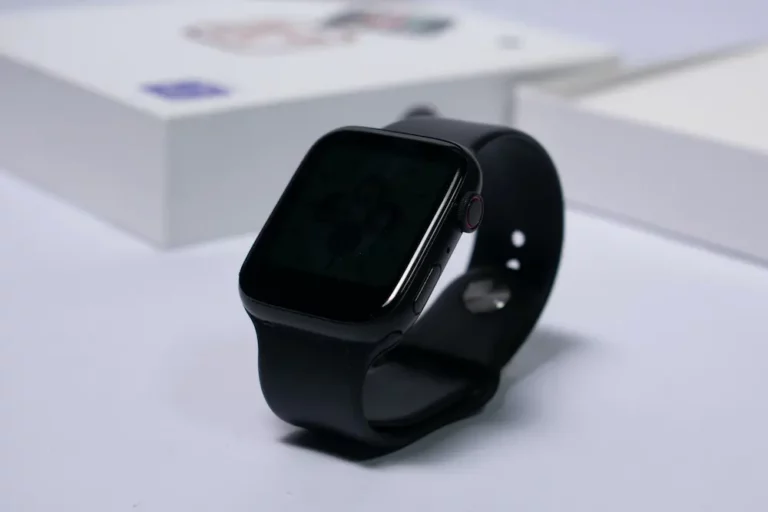What Do Physical Therapists Wear? A Guide to Dressing for the Job
Are you curious about what physical therapists wear to work? As a patient, you may have wondered if there are any specific dress codes or attire that physical therapists follow. In this article, we will explore what physical therapists typically wear when treating patients and why it matters.
First and foremost, physical therapists prioritize comfort and functionality in their work attire. They need to be able to move freely and perform various exercises and stretches with their patients. Therefore, you will often see physical therapists wearing comfortable and flexible clothing such as athletic wear or scrubs. Additionally, they may wear sneakers or other supportive footwear to ensure they can stay on their feet for long periods of time.
While comfort is a priority, physical therapists also understand the importance of professionalism in their field. They may wear a polo shirt or other professional top with their athletic wear or scrubs. Some physical therapists may even wear a lab coat or other medical attire to further emphasize their role as healthcare professionals. Overall, physical therapists aim to strike a balance between comfort and professionalism in their work attire.
The Importance of Comfort and Mobility
As a physical therapist, your attire is an important aspect of your job. You need to wear clothing that allows you to perform your job duties comfortably while keeping both the patient and yourself safe. The clothing you wear should also have a positive impact on the outcomes for the patient.
When it comes to physical therapy, comfort and mobility are key. You need to be able to move freely and perform a range of movements to help your patients achieve their goals. Wearing clothing that restricts your movements or causes discomfort can hinder your ability to provide the best care for your patients.
Proper attire can also help your patients feel more comfortable during their sessions. Patients may be nervous or in pain, and wearing clothing that is comfortable and non-restrictive can help put them at ease. This can lead to better outcomes and a more positive experience for both the patient and the therapist.
When selecting clothing for physical therapy sessions, consider the following:
- Comfort: Choose clothing that is soft, breathable, and non-restrictive. Avoid clothing that is too tight or constricting, as this can limit your range of motion and cause discomfort.
- Mobility: Look for clothing that allows you to move freely and perform a range of movements. Clothing that is too stiff or bulky can hinder your ability to perform certain exercises or stretches.
- Range of motion: Your clothing should allow for a full range of motion, so you can perform exercises and movements with ease. Avoid clothing that restricts your movement, such as tight pants or shirts with sleeves that are too short.
- Safety: Your clothing should be safe for both you and your patients. Avoid clothing with loose or dangling pieces that could get caught on equipment or cause a tripping hazard.
In summary, wearing comfortable and non-restrictive clothing is essential for physical therapists. It allows you to perform your job duties effectively while keeping both you and your patients safe. Choosing the right attire can also help put your patients at ease and lead to better outcomes.
Physical Therapist’s Typical Attire
As a physical therapist, your attire should be functional and comfortable while also maintaining a professional appearance. You will need to move around frequently, so it’s important to wear clothing that allows for ease of movement without being too restrictive. Here are some typical clothing items that physical therapists wear:
Tops
When it comes to tops, you can wear a variety of options such as polo shirts, t-shirts, blouses, and tank tops. It’s important to choose tops that are made of breathable fabric, especially if you work in a warmer environment. You can also wear sweatshirts or sweatpants during colder months.
Bottoms
For bottoms, you can choose from slacks, jeans, athletic shorts, leggings, or skirts. Elastic waistbands or drawstrings are a great option as they provide comfort and flexibility. Avoid wearing tight-fitting clothes or clothing with heels as they may restrict your movement or cause discomfort during treatments.
Shoes
As a physical therapist, you will be on your feet for extended periods, so comfortable shoes are a must. Athletic shoes or sneakers with good arch support are recommended. Avoid wearing dress shoes or heels as they may cause discomfort or lead to foot injuries.
Accessories
Accessories such as jewelry or scarves should be kept to a minimum to avoid any safety hazards or distractions during treatments. A sports bra is recommended for female therapists, especially when working with patients who require manual therapy on their upper body.
Work Clothes
Some physical therapy clinics require therapists to wear scrubs or activewear as their uniform. If this is the case, make sure to follow the dress code guidelines provided by your employer.
In summary, as a physical therapist, your attire should be functional, comfortable, and professional. Choose clothing that allows for ease of movement and wear comfortable shoes with good arch support. Keep accessories to a minimum and follow the dress code guidelines provided by your employer if applicable.
Considerations for Safety and Patient Interaction
When it comes to physical therapy, safety is a top priority. As a physical therapist, you want to make sure that your patients are safe and comfortable throughout their treatment. This means that you need to consider what you wear during your sessions.
First and foremost, you want to make sure that your clothing is safe for your patients. Avoid wearing anything that could potentially harm your patients, such as loose jewelry or clothing with sharp edges. You also want to make sure that your clothing is clean and free of any contaminants that could cause an infection.
In addition to safety, you also want to consider patient interaction. You want to make sure that your clothing allows you to move freely and easily so that you can demonstrate exercises and help your patients with their movements. This means that you should avoid wearing anything too tight or restrictive.
When it comes to footwear, you want to make sure that you wear shoes with non-skid soles. This will help prevent slips and falls, which can be especially dangerous for patients with back injuries, knee pain, hip pain, or ankle problems.
For patients with injuries or pain in the upper body, such as the neck, shoulders, arms, or back, you want to wear clothing that provides easy access to these areas. This could mean wearing a T-shirt or tank top that allows your patients to see these areas clearly. If you have long hair, you should also bring a hair tie to keep your hair out of the way.
For patients with injuries or pain in the lower body, such as the knees or feet, you want to wear clothing that allows you to move freely and easily. This could mean wearing shorts or leggings that provide easy access to these areas.
Overall, your clothing should be functional, comfortable, and safe for both you and your patients. Whether you are working in a hospital gown or in a home health position, you want to make sure that your clothing allows you to provide the best possible care for your patients.
Dress Codes and Guidelines in Different Settings
As a physical therapist, it is important to dress professionally and appropriately for the setting you are working in. Dress codes may vary depending on the type of facility you work in, such as an outpatient clinic or skilled nursing facility (SNF), and the patient population you serve.
In an outpatient setting, it is important to dress in a professional and neat manner. Dress pants, khakis, or skirts paired with a button-up shirt, blouse, or polo shirt are appropriate. Scrubs may also be acceptable depending on the patient population. Avoid wearing clothing with logos or graphics, as this can be distracting for patients. Closed-toe shoes are recommended for safety reasons, and comfortable shoes are important as you may be on your feet for long periods of time.
In a SNF or other inpatient setting, uniformity may be required. This may include wearing scrubs provided by the facility or a specific color or style of clothing. Jewelry may be restricted for safety reasons, and comfortable shoes with non-slip soles are important for navigating the facility.
When deciding what to wear to physical therapy, it is important to consider the area of the body being treated. Clothing should allow for easy access and mobility to the affected area. For example, if you are receiving treatment for neck pain, wear a T-shirt that allows your therapist to see your neck and upper back. Avoid clothing that is too tight or restrictive, as this can limit your range of motion during therapy.
It is also important to consider what not to wear to physical therapy. Avoid wearing clothing that is too revealing or provocative, as this can make both you and your therapist uncomfortable. Avoid wearing strong perfumes or colognes, as some patients may be sensitive to strong scents.
Overall, dressing professionally and appropriately for the setting and patient population is important in maintaining a professional image as a physical therapist.
Special Clothing Recommendations for Specific Injuries
If you have a specific injury that requires physical therapy, you may need to wear special clothing to your appointments. Here are some recommendations for different types of injuries:
Ankle Injury
If you have an ankle injury, you should wear socks and athletic shoes to your physical therapy appointments. Your physical therapist may ask you to perform some physical activity, so supportive sneakers are a good choice.
Shoulder Injury
If you have a shoulder injury, you should wear a T-shirt that allows your physical therapist to see your shoulder and upper back. Loose-fitting clothing is best, as tight clothing can restrict your range of motion.
Legs and Hips
If you have an injury to your legs or hips, you should wear loose-fitting shorts, yoga pants, or sweatpants to your physical therapy appointments. These types of clothing allow for easy movement and won’t restrict your range of motion.
Rehabilitation and Recovery
If you are recovering from surgery or are in rehabilitation, you may need to wear special clothing to your physical therapy appointments. Your physical therapist will let you know if you need to wear anything specific.
Overall, it’s important to wear clothing that allows your physical therapist to see and access the injured area. Loose-fitting clothing is generally best, as it allows for easy movement and won’t restrict your range of motion.
Professionalism and Personal Style
As a physical therapist, it’s important to maintain a professional appearance while also expressing your personal style. Your attire should be appropriate for the setting and patient experience, while also being comfortable enough to allow you to perform your duties efficiently. Here are some tips to help you strike the right balance between professionalism and personal style:
Proper Footwear
Proper footwear is essential for physical therapists who spend a lot of time on their feet. Look for shoes that provide adequate support and cushioning, and avoid high heels or shoes with slippery soles. Athletic or professional shoes are a good choice, and make sure they are clean and well-maintained.
Casual Fridays
Some offices may allow for casual Fridays, but it’s important to remember that you are still representing your profession. Avoid wearing clothing that is too revealing or casual, and stick to business-casual attire. Khakis, dress pants, and collared shirts are a good choice, and you can express your personal style with accessories like jewelry or scarves.
Business Attire
If you have a business meeting or conference to attend, it’s important to dress professionally. A suit or dress pants and a blazer are appropriate, and make sure your clothing is clean and wrinkle-free. Avoid wearing anything too flashy or revealing, and keep your accessories to a minimum.
Fashionable Scrubs
If your office allows for scrubs, consider investing in fashionable and comfortable options. Companies like Jaanuu.com offer scrubs that are both stylish and functional, with features like antimicrobial fabric and stretchy material. Just remember to avoid wearing scrubs outside of the office, as they are meant to be worn in a clinical setting.
Hats
Hats are generally not appropriate for physical therapists, as they can be seen as unprofessional. However, if you work in a specialized field like sports medicine, a baseball cap may be acceptable. Just make sure it’s clean and doesn’t have any offensive logos or phrases.
Social media can be a great way to express your personal style and connect with patients, but it’s important to maintain a professional image. Avoid posting anything that could be seen as offensive or unprofessional, and make sure your profile is set to private if you don’t want patients to see it.
Gift Card
If you’re not sure what to wear to work, consider asking for a gift card to a clothing store or website. This can be a great way to update your wardrobe and express your personal style, while also ensuring that your attire is appropriate for the office. Just make sure to check with your employer to see if there are any restrictions on gift cards or clothing allowances.
Buying Guide for Physical Therapist’s Attire
As a physical therapist, it is important to dress appropriately for your job. Your attire should be comfortable, functional, and professional. Here are some tips to help you choose the right clothing for your work:
Consider the Setting
The type of clothing you wear will depend on the setting in which you work. If you work in a clinical environment, you may be required to wear scrubs or other medical attire. If you work in a gym or other fitness facility, you may be able to wear athletic clothing. Consider the dress code of your workplace when choosing your attire.
Choose Loose-Fitting Clothing
Loose-fitting clothing is often a good option for physical therapists. This type of clothing allows you to move freely and comfortably while performing your job duties. It also allows you to expose the affected area of your patient’s body when necessary. Consider wearing clothing with an elastic waistband for added comfort.
Avoid Tight Clothing
Tight clothing can be restrictive and uncomfortable. It can also make it difficult to palpate your patient’s body when necessary. Avoid wearing tight clothing that may hinder your ability to perform your job duties.
Consider Bodily Fluids
As a physical therapist, you may come into contact with bodily fluids from time to time. Consider wearing clothing that is easy to clean and disinfect. Avoid wearing clothing that may absorb bodily fluids and become stained or contaminated.
Pay Attention to Detail
Your attire should reflect the professionalism of your field. Make sure your clothing is clean, neat, and free from wrinkles or stains. Consider wearing a lab coat or other professional attire to convey a sense of authority and expertise.
By following these tips, you can choose the right clothing for your job as a physical therapist. Remember to always prioritize comfort, functionality, and professionalism when selecting your attire.
Conclusion
In conclusion, physical therapists must dress in a professional and comfortable manner that is appropriate for the clinical environment and the patient population they serve. While there is no one-size-fits-all approach to physical therapist attire, there are some general guidelines that can be followed.
When it comes to clothing, physical therapists should wear comfortable and loose-fitting clothes that allow for ease of movement. Scrubs, khakis, dress pants, polo shirts, button-ups, and blouses are all appropriate options. However, it’s important to note that the specific dress code may vary based on the clinical environment and the preferences of the employer.
In addition to clothing, physical therapists should also consider their footwear. Comfortable shoes that provide adequate support are essential for long days on your feet. Sneakers, athletic shoes, and clogs are all good options.
When working with patients, it’s important to consider their needs and preferences. Some patients may be more comfortable with a therapist dressed in scrubs, while others may prefer a therapist in business attire. Ultimately, it’s up to the therapist to determine what is most appropriate based on the patient population they serve.
Overall, physical therapist attire should be professional, comfortable, and appropriate for the clinical environment and patient population. By following these guidelines, physical therapists can ensure that they are dressed in a manner that promotes a positive patient experience and allows them to perform their job duties effectively.
Frequently Asked Questions
What are some recommended pants for female physical therapists?
When it comes to choosing pants for physical therapy, comfort and flexibility are key. Some recommended options for female physical therapists include yoga pants, leggings, or stretchy athletic pants. These types of pants allow for ease of movement and won’t restrict your ability to perform exercises or stretches.
What is the best dress code for a physiotherapist?
The best dress code for a physical therapist will depend on the specific workplace and the type of patients you will be working with. In general, it is best to dress in comfortable, professional attire that allows for movement and flexibility. Many physical therapists opt for scrubs or athletic wear, but some may choose to wear business casual attire.
What does a typical day look like for a physical therapist?
A typical day for a physical therapist may include evaluating patients, developing treatment plans, performing exercises and stretches with patients, and documenting patient progress. Physical therapists may work in a variety of settings, including hospitals, clinics, and private practices.
Can physical therapists wear jewelry?
While it is generally acceptable for physical therapists to wear jewelry, it is important to consider the safety of both the therapist and the patient. Avoid wearing jewelry that may get caught on equipment or clothing, and be mindful of any dangling pieces that may pose a risk during physical activity.
What are some cute outfit options for physical therapists?
While comfort and functionality should be the top priorities when choosing an outfit for physical therapy, there are still plenty of cute and stylish options available. Consider pairing a comfortable pair of leggings or joggers with a loose-fitting top, or opt for a cute athletic dress paired with sneakers.
What should you avoid wearing to physical therapy sessions?
Avoid wearing restrictive or uncomfortable clothing that may limit your ability to move or perform exercises. It is also important to avoid clothing with zippers, buttons, or other hardware that may scratch or irritate the skin during physical activity. Additionally, avoid wearing strong perfumes or colognes that may be overwhelming for patients with sensitivities.







